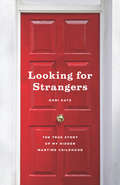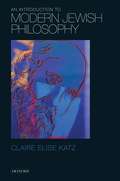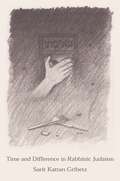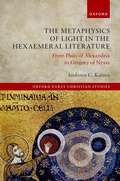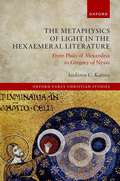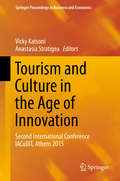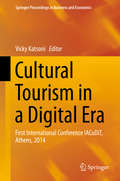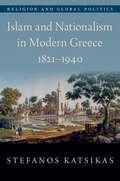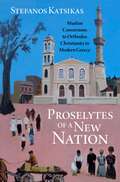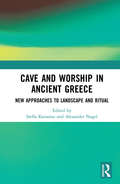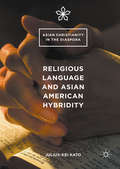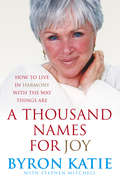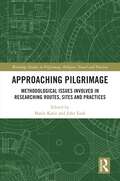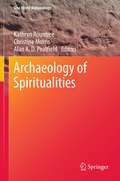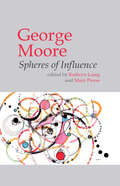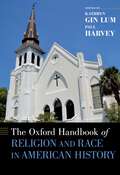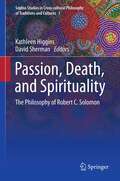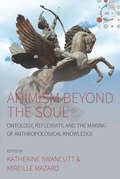- Table View
- List View
Looking for Strangers: The True Story of My Hidden Wartime Childhood
by Dori KatzDori Katz is a Jewish Holocaust survivor who thought that her lost memories of her childhood years in Belgium were irrecoverable. But after a chance viewing of a documentary about hidden children in German-occupied Belgium, she realized that she might, in fact, be able to unearth those years. Looking for Strangers is the deeply honest record of her attempt to do so, a detective story that unfolds through one of the most horrifying periods in history in an attempt to understand one’s place within it. In alternating chapters, Katz journeys into multiple pasts, setting details from her mother’s stories that have captivated her throughout her life alongside an account of her own return to Belgium forty years later—against her mother’s urgings—in search of greater clarity. She reconnects her sharp but fragmented memories: being sent by her mother in 1943, at the age of three, to live with a Catholic family under a Christian identity; then being given up, inexplicably, to an orphanage in the years immediately following the war. Only after that, amid postwar confusion, was she able to reconnect with her mother. Following this trail through Belgium to her past places of hiding, Katz eventually finds herself in San Francisco, speaking with a man who claimed to have known her father in Auschwitz—and thus known his end. Weighing many other stories from the people she meets along her way—all of whom seem to hold something back—she attempts to stitch thread after thread into a unified truth, to understand the countless motivations and circumstances that determined her remarkable life. A story at once about self-discovery, the transformation of memory, a fraught mother-daughter relationship, and the oppression of millions, Looking for Strangers is a book of both historical insight and imaginative grasp. It is a book in which the past, through its very mystery, becomes alive, immediate—of the most urgent importance.
Looking for Strangers: The True Story of My Hidden Wartime Childhood
by Dori KatzDori Katz is a Jewish Holocaust survivor who thought that her lost memories of her childhood years in Belgium were irrecoverable. But after a chance viewing of a documentary about hidden children in German-occupied Belgium, she realized that she might, in fact, be able to unearth those years. Looking for Strangers is the deeply honest record of her attempt to do so, a detective story that unfolds through one of the most horrifying periods in history in an attempt to understand one’s place within it. In alternating chapters, Katz journeys into multiple pasts, setting details from her mother’s stories that have captivated her throughout her life alongside an account of her own return to Belgium forty years later—against her mother’s urgings—in search of greater clarity. She reconnects her sharp but fragmented memories: being sent by her mother in 1943, at the age of three, to live with a Catholic family under a Christian identity; then being given up, inexplicably, to an orphanage in the years immediately following the war. Only after that, amid postwar confusion, was she able to reconnect with her mother. Following this trail through Belgium to her past places of hiding, Katz eventually finds herself in San Francisco, speaking with a man who claimed to have known her father in Auschwitz—and thus known his end. Weighing many other stories from the people she meets along her way—all of whom seem to hold something back—she attempts to stitch thread after thread into a unified truth, to understand the countless motivations and circumstances that determined her remarkable life. A story at once about self-discovery, the transformation of memory, a fraught mother-daughter relationship, and the oppression of millions, Looking for Strangers is a book of both historical insight and imaginative grasp. It is a book in which the past, through its very mystery, becomes alive, immediate—of the most urgent importance.
Looking for Strangers: The True Story of My Hidden Wartime Childhood
by Dori KatzDori Katz is a Jewish Holocaust survivor who thought that her lost memories of her childhood years in Belgium were irrecoverable. But after a chance viewing of a documentary about hidden children in German-occupied Belgium, she realized that she might, in fact, be able to unearth those years. Looking for Strangers is the deeply honest record of her attempt to do so, a detective story that unfolds through one of the most horrifying periods in history in an attempt to understand one’s place within it. In alternating chapters, Katz journeys into multiple pasts, setting details from her mother’s stories that have captivated her throughout her life alongside an account of her own return to Belgium forty years later—against her mother’s urgings—in search of greater clarity. She reconnects her sharp but fragmented memories: being sent by her mother in 1943, at the age of three, to live with a Catholic family under a Christian identity; then being given up, inexplicably, to an orphanage in the years immediately following the war. Only after that, amid postwar confusion, was she able to reconnect with her mother. Following this trail through Belgium to her past places of hiding, Katz eventually finds herself in San Francisco, speaking with a man who claimed to have known her father in Auschwitz—and thus known his end. Weighing many other stories from the people she meets along her way—all of whom seem to hold something back—she attempts to stitch thread after thread into a unified truth, to understand the countless motivations and circumstances that determined her remarkable life. A story at once about self-discovery, the transformation of memory, a fraught mother-daughter relationship, and the oppression of millions, Looking for Strangers is a book of both historical insight and imaginative grasp. It is a book in which the past, through its very mystery, becomes alive, immediate—of the most urgent importance.
Looking for Strangers: The True Story of My Hidden Wartime Childhood
by Dori KatzDori Katz is a Jewish Holocaust survivor who thought that her lost memories of her childhood years in Belgium were irrecoverable. But after a chance viewing of a documentary about hidden children in German-occupied Belgium, she realized that she might, in fact, be able to unearth those years. Looking for Strangers is the deeply honest record of her attempt to do so, a detective story that unfolds through one of the most horrifying periods in history in an attempt to understand one’s place within it. In alternating chapters, Katz journeys into multiple pasts, setting details from her mother’s stories that have captivated her throughout her life alongside an account of her own return to Belgium forty years later—against her mother’s urgings—in search of greater clarity. She reconnects her sharp but fragmented memories: being sent by her mother in 1943, at the age of three, to live with a Catholic family under a Christian identity; then being given up, inexplicably, to an orphanage in the years immediately following the war. Only after that, amid postwar confusion, was she able to reconnect with her mother. Following this trail through Belgium to her past places of hiding, Katz eventually finds herself in San Francisco, speaking with a man who claimed to have known her father in Auschwitz—and thus known his end. Weighing many other stories from the people she meets along her way—all of whom seem to hold something back—she attempts to stitch thread after thread into a unified truth, to understand the countless motivations and circumstances that determined her remarkable life. A story at once about self-discovery, the transformation of memory, a fraught mother-daughter relationship, and the oppression of millions, Looking for Strangers is a book of both historical insight and imaginative grasp. It is a book in which the past, through its very mystery, becomes alive, immediate—of the most urgent importance.
An Introduction to Modern Jewish Philosophy (Introductions To Religion Ser.)
by Claire Elise KatzHow Jewish is modern Jewish philosophy? The question at first appears nonsensical, until we consider that the chief issues with which Jewish philosophers have engaged, from the Enlightenment through to the late 20th century, are the standard preoccupations of general philosophical inquiry. Questions about God, reality, language, and knowledge - metaphysics and epistemology - have been of as much concern to Jewish thinkers as they have been to others. Moses Mendelssohn, for example, was a friend of Kant. Hermann Cohen's philosophy is often described as 'neo-Kantian.' Franz Rosenzweig wrote his dissertation on Hegel. And the thought of Emmanuel Levinas is indebted to Husserl. In this much-needed textbook, which surveys the most prominent thinkers of the last three centuries, Claire Katz situates modern Jewish philosophy in the wider cultural and intellectual context of its day, indicating how broader currents of British, French and German thought influenced its practitioners. But she also addresses the unique ways in which being Jewish coloured their output, suggesting that a keen sense of particularity enabled the Jewish philosophers to help define the whole modern era. Intended to be used as a core undergraduate text, the book will also appeal to anyone with an interest how some of the greatest minds of the age grappled with some of its most urgent and fascinating philosophical problems.
Time and Difference in Rabbinic Judaism
by Professor Sarit Kattan GribetzHow the rabbis of late antiquity used time to define the boundaries of Jewish identityThe rabbinic corpus begins with a question–“when?”—and is brimming with discussions about time and the relationship between people, God, and the hour. Time and Difference in Rabbinic Judaism explores the rhythms of time that animated the rabbinic world of late antiquity, revealing how rabbis conceptualized time as a way of constructing difference between themselves and imperial Rome, Jews and Christians, men and women, and human and divine.In each chapter, Sarit Kattan Gribetz explores a unique aspect of rabbinic discourse on time. She shows how the ancient rabbinic texts artfully subvert Roman imperialism by offering "rabbinic time" as an alternative to "Roman time." She examines rabbinic discourse about the Sabbath, demonstrating how the weekly day of rest marked "Jewish time" from "Christian time." Gribetz looks at gendered daily rituals, showing how rabbis created "men's time" and "women's time" by mandating certain rituals for men and others for women. She delves into rabbinic writings that reflect on how God spends time and how God's use of time relates to human beings, merging "divine time" with "human time." Finally, she traces the legacies of rabbinic constructions of time in the medieval and modern periods.Time and Difference in Rabbinic Judaism sheds new light on the central role that time played in the construction of Jewish identity, subjectivity, and theology during this transformative period in the history of Judaism.
Time and Difference in Rabbinic Judaism
by Professor Sarit Kattan GribetzHow the rabbis of late antiquity used time to define the boundaries of Jewish identityThe rabbinic corpus begins with a question–“when?”—and is brimming with discussions about time and the relationship between people, God, and the hour. Time and Difference in Rabbinic Judaism explores the rhythms of time that animated the rabbinic world of late antiquity, revealing how rabbis conceptualized time as a way of constructing difference between themselves and imperial Rome, Jews and Christians, men and women, and human and divine.In each chapter, Sarit Kattan Gribetz explores a unique aspect of rabbinic discourse on time. She shows how the ancient rabbinic texts artfully subvert Roman imperialism by offering "rabbinic time" as an alternative to "Roman time." She examines rabbinic discourse about the Sabbath, demonstrating how the weekly day of rest marked "Jewish time" from "Christian time." Gribetz looks at gendered daily rituals, showing how rabbis created "men's time" and "women's time" by mandating certain rituals for men and others for women. She delves into rabbinic writings that reflect on how God spends time and how God's use of time relates to human beings, merging "divine time" with "human time." Finally, she traces the legacies of rabbinic constructions of time in the medieval and modern periods.Time and Difference in Rabbinic Judaism sheds new light on the central role that time played in the construction of Jewish identity, subjectivity, and theology during this transformative period in the history of Judaism.
The Metaphysics of Light in the Hexaemeral Literature: From Philo of Alexandria to Gregory of Nyssa (Oxford Early Christian Studies)
by Isidoros C. KatsosThis volume critically re-evaluates the received interpretation of the nature of light in the ancient sources. Isidoros C. Katsos contests the prevalent view in the history of optics according to which pre-modernity theorized light as subordinate to sight ('oculocentrism') by examining in depth the contrary textual evidence found in early Christian texts. It shows that, from Philo of Alexandria and Origen to Basil of Caesarea and Gregory of Nyssa, the Jewish-Christian commentary tradition on the hexaemeral literature (the biblical creation narrative) reflected deeply on the nature and physicality of light for the purposes of understanding the structure and purpose of material creation. Contemplation of nature allowed early Christian thinkers to conceptualize light as the explanatory principle of vision rather than subordinated to it. Contrary to the prevalent view, the hexaemeral literature necessitates a 'luminocentric' interpretation of the theory of light of Plato's Timaeus in its reception history in the context of late antique cosmology. Hexaemeral luminocentrism invites the reader of Scripture to grasp not only the sensible properties of light, but also their causal principle as the first manifestation of the divine Logos in creation. The hexaemeral metaphysics thus provides the missing ground of meaning of the early Christian language of light.
The Metaphysics of Light in the Hexaemeral Literature: From Philo of Alexandria to Gregory of Nyssa (Oxford Early Christian Studies)
by Isidoros C. KatsosThis volume critically re-evaluates the received interpretation of the nature of light in the ancient sources. Isidoros C. Katsos contests the prevalent view in the history of optics according to which pre-modernity theorized light as subordinate to sight ('oculocentrism') by examining in depth the contrary textual evidence found in early Christian texts. It shows that, from Philo of Alexandria and Origen to Basil of Caesarea and Gregory of Nyssa, the Jewish-Christian commentary tradition on the hexaemeral literature (the biblical creation narrative) reflected deeply on the nature and physicality of light for the purposes of understanding the structure and purpose of material creation. Contemplation of nature allowed early Christian thinkers to conceptualize light as the explanatory principle of vision rather than subordinated to it. Contrary to the prevalent view, the hexaemeral literature necessitates a 'luminocentric' interpretation of the theory of light of Plato's Timaeus in its reception history in the context of late antique cosmology. Hexaemeral luminocentrism invites the reader of Scripture to grasp not only the sensible properties of light, but also their causal principle as the first manifestation of the divine Logos in creation. The hexaemeral metaphysics thus provides the missing ground of meaning of the early Christian language of light.
Tourism and Culture in the Age of Innovation: Second International Conference IACuDiT, Athens 2015 (Springer Proceedings in Business and Economics)
by Vicky Katsoni Anastasia StratigeaThis book focuses on cultural tourism as it develops into the second decade of the new millennium. It presents recent hospitality and tourism research findings from various sources, including academic researchers and scholars, industry professionals, government and quasi-government officials, and other key industry practitioners. It discusses the latest tourism industry trends and identifies gaps in the research from a pragmatic and applied perspective. It includes specific chapters on innovation in tourism, the virtual visitor, cross-cultural visions of digital collections, heritage and museum management in the digital era, cultural and digital tourism policy, marketing and governance, social media, emerging technologies and e-tourism and many other topics of contemporary significance in global hospitality and tourism. The book is edited in collaboration with the International Association of Cultural and Digital Tourism (IACuDiT) and includes the proceedings of the Second International Conference on Cultural and Digital Tourism.
Cultural Tourism in a Digital Era: First International Conference IACuDiT, Athens, 2014 (Springer Proceedings in Business and Economics)
by Vicky KatsoniThis book covers the entire spectrum of cultural and digital tourism and presents the latest findings, examples and cases, highlighting innovations for the tourism industry from both an academic and a practical point of view. The book invites readers to discover ongoing developments and recent trends in fields like heritage and museum management; sports tourism; tourism economics and policy; e-marketing and e-business; and many other fields, making it of value to researchers in tourism management, practitioners and policymakers alike. The book was edited in collaboration with the International Association of Cultural and Digital Tourism - IACuDiT - and includes the proceedings of the First International Conference on Cultural and Digital Tourism.
Islam and Nationalism in Modern Greece, 1821-1940 (Religion and Global Politics)
by Stefanos KatsikasDrawing from a wide range of archival and secondary Greek, Bulgarian, Ottoman, and Turkish sources, Islam and Nationalism in Modern Greece, 1821-1940 explores the way in which the Muslim populations of Greece were ruled by state authorities from the time of Greece's political emancipation from the Ottoman Empire in the 1820s until the country's entrance into the Second World War, in October 1940. The book examines how state rule influenced the development of the Muslim population's collective identity as a minority and affected Muslim relations with the Greek authorities and Orthodox Christians. Greece was the first country in the Balkans to become an independent state and a pioneer in experimenting with minority issues. Greece's ruling framework and many state administrative measures and patterns would serve as templates in other Christian Orthodox Balkan states with Muslim minorities (Bulgaria, Romania, Serbia, Cyprus). Muslim religious officials were empowered with authority which they did not have in Ottoman times, and aspects of the Islamic law (Sharia) were incorporated into the state legal system to be used for Muslim family and property affairs. Religion remained a defining element in the political, social, and cultural life of the post-Ottoman Balkans; Stefanos Katsikas explores the role religious nationalism and public institutions have played in the development and preservation of religious and ethnic identity. Religion remains a key element of individual and collective identity but only as long as there are strong institutions and the political framework to support and maintain religious diversity.
Islam and Nationalism in Modern Greece, 1821-1940 (Religion and Global Politics)
by Stefanos KatsikasDrawing from a wide range of archival and secondary Greek, Bulgarian, Ottoman, and Turkish sources, Islam and Nationalism in Modern Greece, 1821-1940 explores the way in which the Muslim populations of Greece were ruled by state authorities from the time of Greece's political emancipation from the Ottoman Empire in the 1820s until the country's entrance into the Second World War, in October 1940. The book examines how state rule influenced the development of the Muslim population's collective identity as a minority and affected Muslim relations with the Greek authorities and Orthodox Christians. Greece was the first country in the Balkans to become an independent state and a pioneer in experimenting with minority issues. Greece's ruling framework and many state administrative measures and patterns would serve as templates in other Christian Orthodox Balkan states with Muslim minorities (Bulgaria, Romania, Serbia, Cyprus). Muslim religious officials were empowered with authority which they did not have in Ottoman times, and aspects of the Islamic law (Sharia) were incorporated into the state legal system to be used for Muslim family and property affairs. Religion remained a defining element in the political, social, and cultural life of the post-Ottoman Balkans; Stefanos Katsikas explores the role religious nationalism and public institutions have played in the development and preservation of religious and ethnic identity. Religion remains a key element of individual and collective identity but only as long as there are strong institutions and the political framework to support and maintain religious diversity.
Proselytes of a New Nation: Muslim Conversions to Orthodox Christianity in Modern Greece
by Stefanos KatsikasProselytes of a New Nation analyzes questions such as: Why did many Muslims convert to Greek Orthodoxy? What did conversion mean to the converts? What were their economic, social, and professional profiles? And how did conversion affect the converts' relationships with Muslim relatives in Greece and the Ottoman Empire? Because Sharia law and the Ottoman legal system could keep Muslim apostates--Muslims who had converted to other religions--from inheriting family property, Stefanos Katsikas examines the ways in which conversion complicated family relations and often led to legal disputes. This volume also discusses the method used by the Greek state to adjudicate legal disputes on property issues between neophytes (converts) and their Muslim relatives. Proselytes of a New Nation maintains that religious conversion in the era of nationalism was far more consequential for the convert, their family, and their social relations. Converts received not only community attention, but also national. Depending upon the religious affiliation and nationality of an individual, they regarded neophytes as either "traitors" or "heroes." Against this sociopolitical backdrop, conversion more drastically affected the social fabric of communities than in the pre-modern era, and more often led to violence and conflict.
Proselytes of a New Nation: Muslim Conversions to Orthodox Christianity in Modern Greece
by Stefanos KatsikasProselytes of a New Nation analyzes questions such as: Why did many Muslims convert to Greek Orthodoxy? What did conversion mean to the converts? What were their economic, social, and professional profiles? And how did conversion affect the converts' relationships with Muslim relatives in Greece and the Ottoman Empire? Because Sharia law and the Ottoman legal system could keep Muslim apostates--Muslims who had converted to other religions--from inheriting family property, Stefanos Katsikas examines the ways in which conversion complicated family relations and often led to legal disputes. This volume also discusses the method used by the Greek state to adjudicate legal disputes on property issues between neophytes (converts) and their Muslim relatives. Proselytes of a New Nation maintains that religious conversion in the era of nationalism was far more consequential for the convert, their family, and their social relations. Converts received not only community attention, but also national. Depending upon the religious affiliation and nationality of an individual, they regarded neophytes as either "traitors" or "heroes." Against this sociopolitical backdrop, conversion more drastically affected the social fabric of communities than in the pre-modern era, and more often led to violence and conflict.
Cave and Worship in Ancient Greece: New Approaches to Landscape and Ritual
by Stella Katsarou Alexander NagelCave and Worship in Ancient Greece brings together a series of stimulating chapters contributing to the archaeology and our modern understanding of the character and importance of cave sanctuaries in the fi rst millennium BCE Mediterranean. Written by emerging and established archaeologists and researchers, the book employs a fascinating and wide range of approaches and methodologies to investigate, and interpret material assemblages from cave shrines, many of which are introduced here for the fi rst time. An introductory section explores the emergence and growth of caves as centres of cult and religion. The chapters then probe some of the meanings attached to cave spaces and votive materials such as terracotta fi gurines, and ceramics, and those who created and used them. The authors use sensory and gender approaches, discuss the identity of the worshippers, and the contribution of statistical analysis to the role of votive materials. At the heart of the volume is the examination of cave materials excavated on the Cycladic islands and Crete, in Attika and Aitoloakarnania, on the Ionian islands and in southern Italy. This is a welcome volume for students of prehistoric and classical archaeology,enthusiasts of the history of caves, religion, ancient history, and anthropology.
Cave and Worship in Ancient Greece: New Approaches to Landscape and Ritual
by Stella KatsarouCave and Worship in Ancient Greece brings together a series of stimulating chapters contributing to the archaeology and our modern understanding of the character and importance of cave sanctuaries in the fi rst millennium BCE Mediterranean. Written by emerging and established archaeologists and researchers, the book employs a fascinating and wide range of approaches and methodologies to investigate, and interpret material assemblages from cave shrines, many of which are introduced here for the fi rst time. An introductory section explores the emergence and growth of caves as centres of cult and religion. The chapters then probe some of the meanings attached to cave spaces and votive materials such as terracotta fi gurines, and ceramics, and those who created and used them. The authors use sensory and gender approaches, discuss the identity of the worshippers, and the contribution of statistical analysis to the role of votive materials. At the heart of the volume is the examination of cave materials excavated on the Cycladic islands and Crete, in Attika and Aitoloakarnania, on the Ionian islands and in southern Italy. This is a welcome volume for students of prehistoric and classical archaeology,enthusiasts of the history of caves, religion, ancient history, and anthropology.
Religious Language and Asian American Hybridity (Asian Christianity in the Diaspora)
by Julius-Kei KatoIn this book, Julius-Kei Kato lets the theories and experiences of Asian American hybridity converse with and bear upon some aspects of Christian biblical and theological language. Hybridity has become a key feature of today’s globalized world and is, of course, a key concept in postcolonial thought. However, despite its crucial importance, hybridity is rarely used as a paradigm through which to analyze and evaluate the influential concepts and teachings that make up religious language. This book fills a lacuna by discussing what the concept of hybridity challenges and resists, what over-simplifications it has the power to complicate, and what forgotten or overlooked strands in religious tradition it endeavors to recover and reemphasize. Shifting seamlessly between biblical, theological, and modern, real-world case studies, Kato shows how hybridity permeates and can illuminate religious phenomena as lived and believed. The ultimate goal of the move toward an embrace of hybridity is a further dissolution of the thick wall separating ideas of "us" and "them." In this book, Kato suggests the possibility of a world in which what one typically considers the "other" is increasingly recognized within oneself.
A Thousand Names For Joy: How To Live In Harmony With The Way Things Are
by Byron Katie Stephen MitchellInspired by the Tao Te Ching, this is Byron Katie's inspiring and pragmatic approach to achieving an awakened mind and living more simply and profoundly. Using the template of the 81 chapters of the Tao Te Ching she talks about her own experience of living in harmony with the way things are, and the difference between what hurts and what doesn't. Katie has written two books that teach how suffering can be relieved by questioning the thoughts that create it, the thoughts that argue with reality. This questioning takes courage and, in this her third book, she gives readers profound encouragement by showing them the freedom and love that live on the other side of self-inquiry.Many people believe that although enlightenment was attainable thousands of years ago by a few great saints or ascetics, such a state is out of reach of anyone living in the modern world, let alone themselves. This richly detailed account has the ability to change that belief.Katie's comments on life, and how to live it, are profound, vibrant, funny and crystal clear and all rooted in the familiar circumstances of everyday life.
Approaching Pilgrimage: Methodological Issues Involved in Researching Routes, Sites, and Practices (Routledge Studies in Pilgrimage, Religious Travel and Tourism)
by Mario Katić John EadeThis volume seeks to explore pilgrimage studies as a distinctive sub-field of research, and to define its key methodological approaches and problems. Pilgrimage studies has long been influenced by such academic disciplines as anthropology and this volume considers the new insights that pilgrimage studies can offer to these disciplinary fields. Bringing together experienced pioneers and a younger generation of pilgrimage scholars, the chapters address the directions contemporary pilgrimage research is taking and how it is developing into the future. Covering topics like digital pilgrimage, multi-site pilgrimages, and long-term ethnography, with examples from Europe, the Middle East, and Japan, this is an important resource for all researchers engaging with pilgrimage.
Archaeology of Spiritualities (One World Archaeology)
by Kathryn Rountree, Christine Morris and Alan A. D. PeatfieldArchaeology of Spiritualties provides a fresh exploration of the interface between archaeology and religion/spirituality. Archaeological approaches to the study of religion have typically and often unconsciously, drawn on western paradigms, especially Judaeo-Christian (mono) theistic frameworks and academic rationalisations. Archaeologists have rarely reflected on how these approaches have framed and constrained their choices of methodologies, research questions, hypotheses, definitions, interpretations and analyses and have neglected an important dimension of religion: the human experience of the numinous - the power, presence or experience of the supernatural.Within the religions of many of the world’s peoples, sacred experiences – particularly in relation to sacred landscapes and beings connected with those landscapes – are often given greater emphasis, while doctrine and beliefs are relatively less important. Archaeology of Spiritualities asks how such experiences might be discerned in the archaeological record; how do we recognize and investigate ‘other’ forms of religious or spiritual experience in the remains of the past?.The volume opens up a space to explore critically and reflexively the encounter between archaeology and diverse cultural expressions of spirituality. It showcases experiential and experimental methodologies in this area of the discipline, an unconventional approach within the archaeology of religion. Thus Archaeology of Spiritualities offers a unique, timely and innovative contribution, one that is also challenging and stimulating. It is a great resource to archaeologists, historians, religious scholars and others interested in cultural and religious heritage.
George Moore: Spheres of Influence
by Kathryn Laing and Mary PierseThis invigorating volume explores the literary worlds inhabited by the pioneering Irish author George Moore (1852–1933). With an eye to Moore’s innovative embrace of visual art, feminism and literary history, and in the spirit of his feisty resistance to ‘orthodoxy’, it investigates his influences and inventive strategies in novel, short story and memoir. Amongst the names emerging from the disparate spheres of impressionism, literary coteries, the paratextual and the music world are those of Manet, Mallarmé, Wilde, Héloïse, Elgar and Bourdieu, all with Moorian links. Contested depictions of religion and nationalism simmer; France and French influences encompass fin-de-siècle stories and medieval texts; epistolary details evidence vital parental support; contemporary authors write back to Moore. These voyages of discovery enter the fields of feminist scholarship and the New Woman, life writing and letters, fin-de-siècle aesthetics, intersections between art, music and literature, and literary transitions from Victorian to Modern. Valuably, the authors suggest numerous opportunities for additional research in these areas, as well as within Moore studies. This collection, with contributions from an international set of established and new scholars, delivers fresh and original findings as it builds on the substantial and ever-growing corpus of Moore studies.
The Oxford Handbook of Religion and Race in American History (Oxford Handbooks)
by Kathryn Gin Lum and Paul HarveyThe Oxford Handbook of Religion and Race in American History brings together a number of established scholars, as well as younger scholars on the rise, to provide a scholarly overview for those interested in the role of religion and race in American history. Thirty-four scholars from the fields of History, Religious Studies, Sociology, Anthropology, and more investigate the complex interdependencies of religion and race from pre-Columbian origins to the present. The volume addresses the religious experience, social realities, theologies, and sociologies of racialized groups in American religious history, as well as the ways that religious myths, institutions, and practices contributed to their racialization. Part One begins with a broad introductory survey outlining some of the major terms and explaining the intersections of race and religions in various traditions and cultures across time. Part Two provides chronologically arranged accounts of specific historical periods that follow a narrative of religion and race through four-plus centuries. Taken together, The Oxford Handbook of Religion and Race in American History provides a reliable scholarly text and resource to summarize and guide work in this subject, and to help make sense of contemporary issues and dilemmas.
Passion, Death, and Spirituality: The Philosophy of Robert C. Solomon (Sophia Studies in Cross-cultural Philosophy of Traditions and Cultures #1)
by Kathleen Higgins and David ShermanRobert C. Solomon, who died in 2007, was Professor of Philosophy and Quincy Lee Centennial Professor of Business at the University of Texas, USA. As the first book comprehensively to examine the breadth of Solomon’s contribution to philosophy, this volume ranks as a vital addition to the literature. It includes a newly published transcript of Solomon’s last talk, which responded to Arindam Chakrabarti on the concept of revenge, as well as the considered views of prominent figures in the numerous subfields in which Solomon worked. The content analyses his perspectives on the philosophy of emotion, virtue, business ethics, and religion, in addition to philosophical history, existentialism, and the many other topics that held this prolific thinker’s attention. Solomon memorably defined philosophy itself as ‘the thoughtful love of life’, and despite the diversity of his output, he was most drawn by central questions about the meaning of life, the essential role that emotions play in finding that meaning, and the human imperative to seek ‘emotional integrity’, in which one’s thoughts, emotions, and actions all contribute to a coherent narrative. The essays included here draw attention to the interconnections between the issues Solomon addressed, and evince the manner in which he embodied that integrity, living a life at one with his philosophy. They emphasize the central themes of passion, ethics, and spirituality, which threaded through his work, and the way these ideas informed his views on how we should approach grief and death. The multiplicity of topics alone make this keystone work an enlightening read for a full spectrum of students of philosophy, providing much to ponder and recounting a subtle and shining example of the emotional integrity Solomon worked so hard to define.
Animism beyond the Soul: Ontology, Reflexivity, and the Making of Anthropological Knowledge (Studies in Social Analysis #6)
by Katherine Swancutt and Mireille MazardHow might we envision animism through the lens of the ‘anthropology of anthropology’? The contributors to this volume offer compelling case studies that demonstrate how indigenous animistic practices, concepts, traditions, and ontologies are co-authored in highly reflexive ways by anthropologists and their interlocutors. They explore how native epistemologies, which inform anthropological notions during fieldwork, underpin the dialogues between researchers and their participants. In doing so, the contributors reveal ways in which indigenous thinkers might be influenced by anthropological concepts of the soul and, equally, how they might subtly or dramatically then transform those same concepts within anthropological theory.
